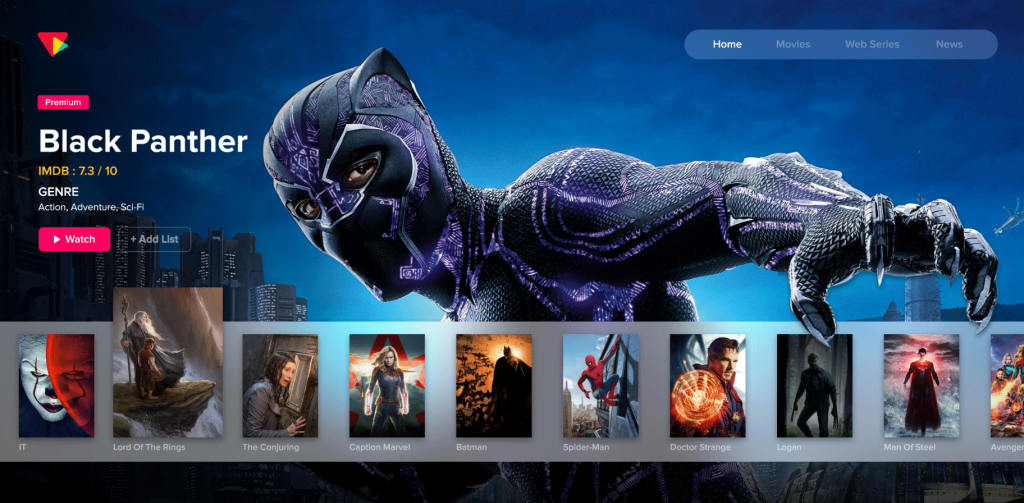How Apollo Group Tv can Save You Time, Stress, and Money.
How Apollo Group Tv can Save You Time, Stress, and Money.
Blog Article
How Apollo Group Tv can Save You Time, Stress, and Money.
Table of ContentsSome Known Details About Apollo Group Tv Top Guidelines Of Apollo Group TvUnknown Facts About Apollo Group TvThe Greatest Guide To Apollo Group Tv
In this situation, instead than having three-minute commercial areas throughout a 30-minute tv program, television shows may change to one where a consumer will be needed to have a month-to-month subscription, to ensure that they cen sight targeted banner advertisements. This kind of marketing already occurs on the net, and the quantity of data television business gather enables them to do similar.Explain the major fads among the broadcasting and cable television networks. Popular radio shows such as cops dramatization Dragnet and western cowboy series Gunsmoke were adjusted for tv, and new Television shows were funded by single advertisers, simply as radio shows had actually been.
Today, the television sector is even more intricate. Programs are sponsored by multiple marketers; programming is regulated by major media conglomerates; and the 3 major networks no longer dominate the airwaves yet instead share their audiences with numerous wire channels. Numerous elements make up these patterns within the sector, including technical developments, federal government policies, and the production of new networks.

Not known Facts About Apollo Group Tv
Developed in 1969, (PBS) created out of a record by the Carnegie Payment on Educational Television, which analyzed the role of academic, noncommercial tv on society. Public television was likewise intended to provide global access to television for customers in country locations or viewers who might not pay for to pay for exclusive tv services.
The period between 1950 and 1970 is historically acknowledged as the. Apart from a tiny section of airtime controlled by public television, the three major networks (understood as the Big Three) dominated the tv industry, collectively accounting for more than 95 percent of prime-time viewing. In 1986, Rupert Murdoch, the head of multinational company News Corp, launched the Fox network, challenging the dominance of the Big Three.
Targeting young and minority audiences with shows such as Buffy the Vampire Killer, Moesha, Dawson's Creek, and The Wayans Bros., the brand-new networks wanted to draw terminals far from their old network affiliations. Instead than repeating the success of Fox, UPN and WB struggled to make an impact. Incapable to draw in many affiliate terminals, both new networks got to less families than their larger competitors because they were inaccessible in some smaller sized cities.
This choice led the way for the advancement of cable television film channels, adding to the rapid development of cable television in the 1980s and 1990s. apollo tv. More deregulation of cord in the 1984 Cable Television Communications Policy Act got rid of limitations on cable television rates, enabling drivers to charge what they wanted for wire services as long as there worked competitors to the solution (a requirement that over 90 percent of all cable television markets could meet)
The 8-Second Trick For Apollo Group Tv

Having developed the initial "superstation," Turner increased his world by starting 24-hour information network CNN in 1980. At the end of the year, 28 nationwide shows solutions were readily available, and the cable revolution had begun. Over the following years, the sector undertook a duration of quick development and appeal, and by 1994 visitors can pick from 94 standard and 20 costs wire solutions.
Number 9 - https://forums.hostsearch.com/member.php?269806-apollogtv01.16 Increased competition from cord networks has triggered a constant decrease in the networks' audience ratings. During the 1950s, the cost of creating a solitary tv program raised as shows ended up being much longer and manufacturing prices rose. Sponsorship on network tv moved from single sponsorship, in which a program was completely supported and generated by one marketer, to numerous sponsorship, in which marketers bought 1- or 2-minute spots on the show
Choose one of the Big Four networks and print out its once a week shows timetable. See the network's prime-time programs over the training course of a week, keeping in mind the target market for each program.
All About Apollo Group Tv

Direct television, frequently referred to as standard program TV, includes cord and satellite tv. It's called "direct" due to the fact that content follows an established programs routine, unlike on-demand material which the private customer makes a decision to see based upon their very own choices and routine. When you ask, "What is linear TV?", consider it as the timeless means of seeing TV that has been around for years.
Report this page